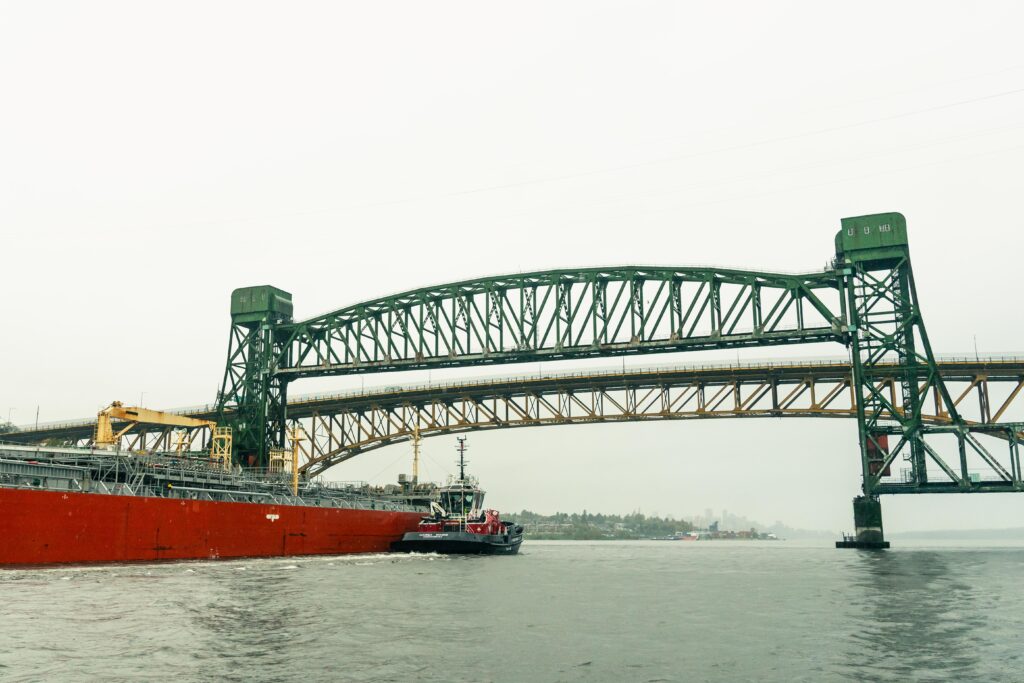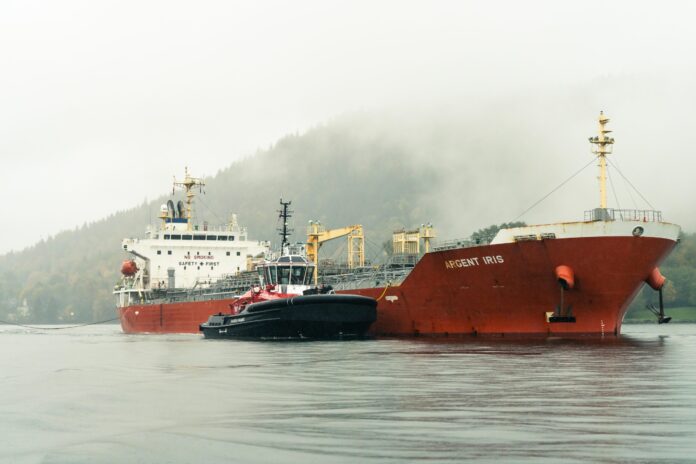The world’s first electric tugboat recently proved itself, escorting an oil tanker into Vancouver.
On October 18, the HaiSea Wamis escorted a 30,000 tonne oil tanker under the Second Narrows Bridge and into the harbour. According to co-owner and operator Seaspan, it’s the first time ever a fully-electric vessel has been used to escort an oil tanker.
HaiSea’s Director of Operations Vince Percy says the tug’s performance is attracting international attention.
“The amount of people who’ve requested interviews, or additional information, or tours, and with serious interest about opportunities to put something else to use around the world, it far exceeded my initial expectations, so it’s been very cool to see the response,” he says.
Percy says the tug is capable of moving the largest ships that dock at Vancouver’s harbour, and can operate for several hours before needing to charge. He says the company installed a simulator to train crew, and so far they’ve loved the opportunity to put the real vessel into action.
One of the biggest surprises they found was how quiet the electric tug is compared to conventional vessels.
“It’s strange for our long-term masters to not hear the sound of an engine ramping up, or a constant drone that makes it hard to communicate on board,” he says.
The Wamis is the first of three electric tugboats operated by HaiSea Marine, a joint venture majority-owned by the Kitimat-region Haisla Nation, in partnership with Seaspan.
The second electric tug HaiSea Wee’git was recently delivered and the third, HaiSea Brave, is expected soon.
HaiSea Marine will operate five tugs in total, including the diesel-LNG (liquified natural gas) HaiSea Kermode and HaiSea Warrior, the first of their kind in Canada, currently under construction.
The tugs were designed by Vancouver-based naval architect firm Robert Allan and built in Turkey. Once completed, Percy says the fleet will be among the greenest in the world.
Once all are delivered, they will be based in Kitimat to provide ship assistance and escort towing services to LNG carriers calling at LNG Canada’s new export facility in the traditional territory of the Haisla Nation. Percy says his company is waiting eagerly like everyone else for LNG Canada to officially open the facility and put the vessels into operation.
The Wamis will operate in Vancouver until the other tugs are delivered.
Two LNG facilities in the Kitimat region will compress and export Canadian natural gas, transported to the coast via the Coastal Gaslink pipeline, which was completed last month.







